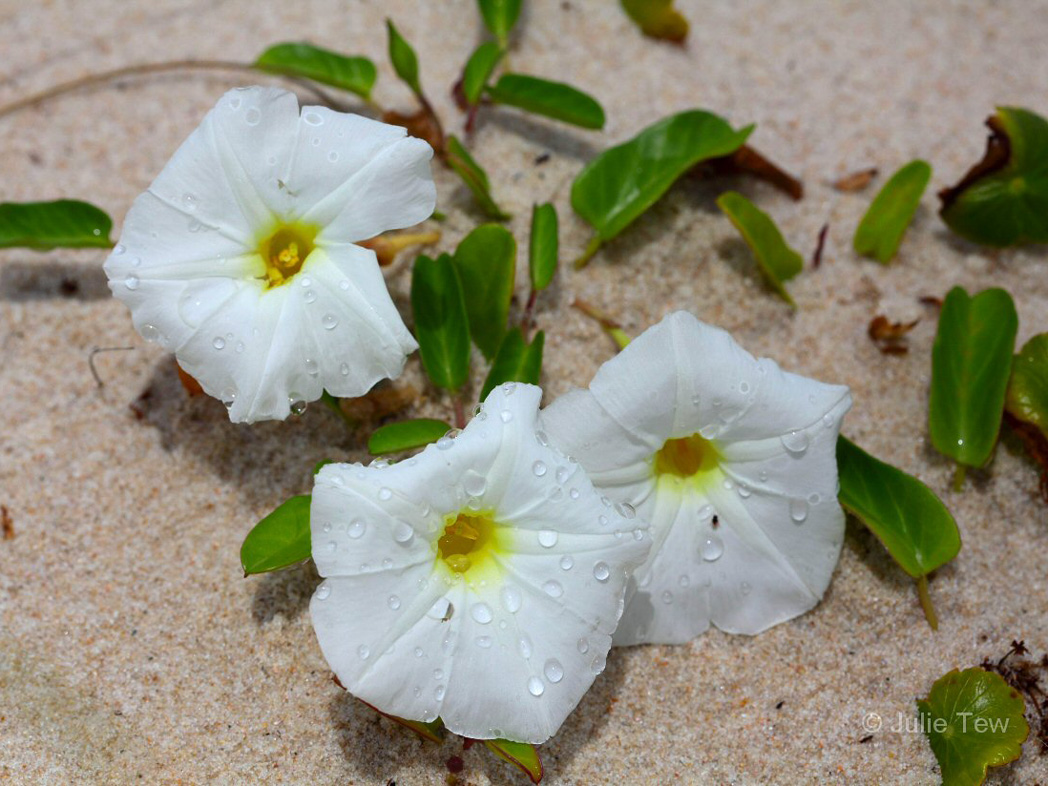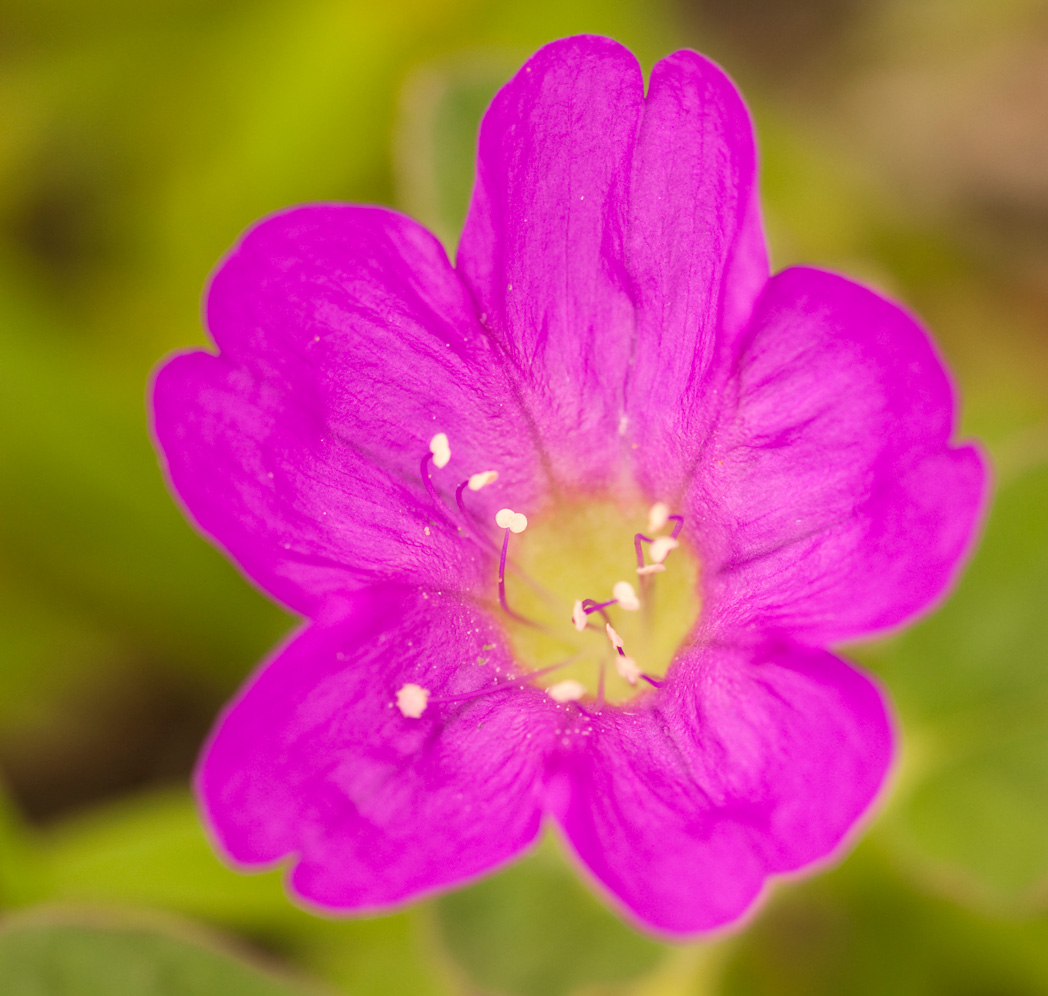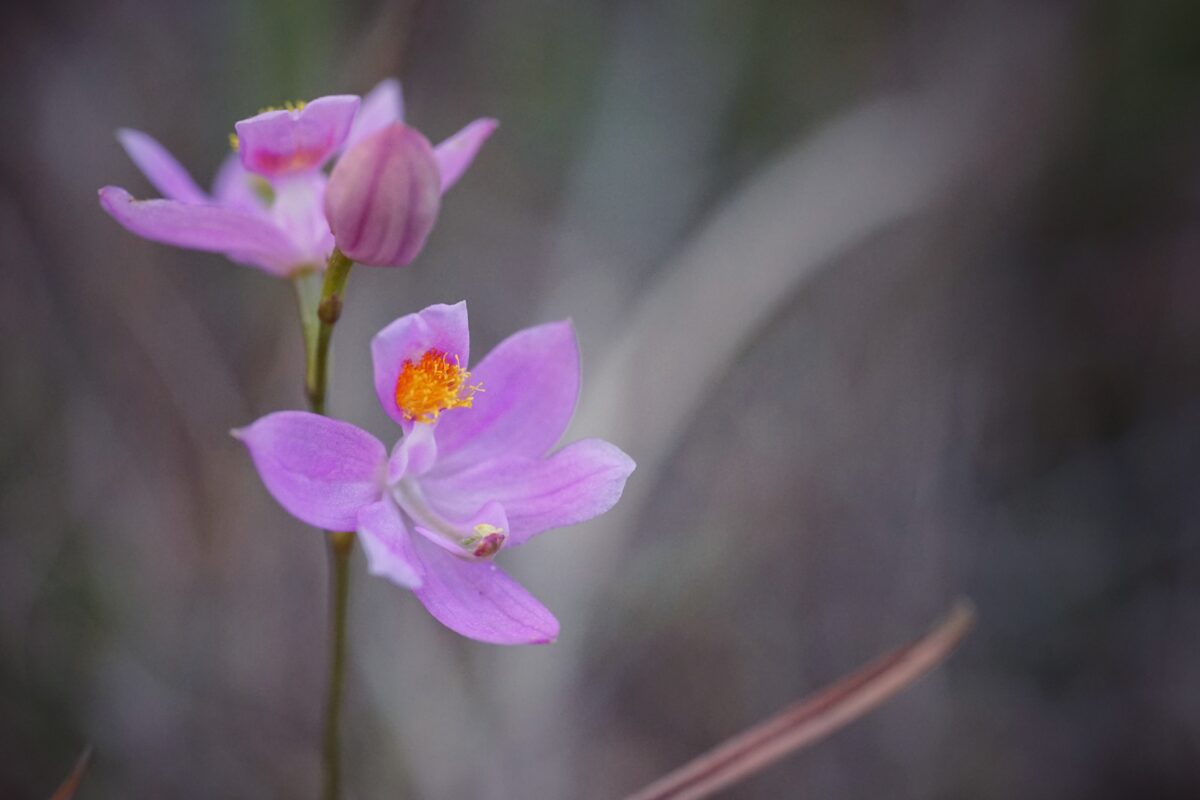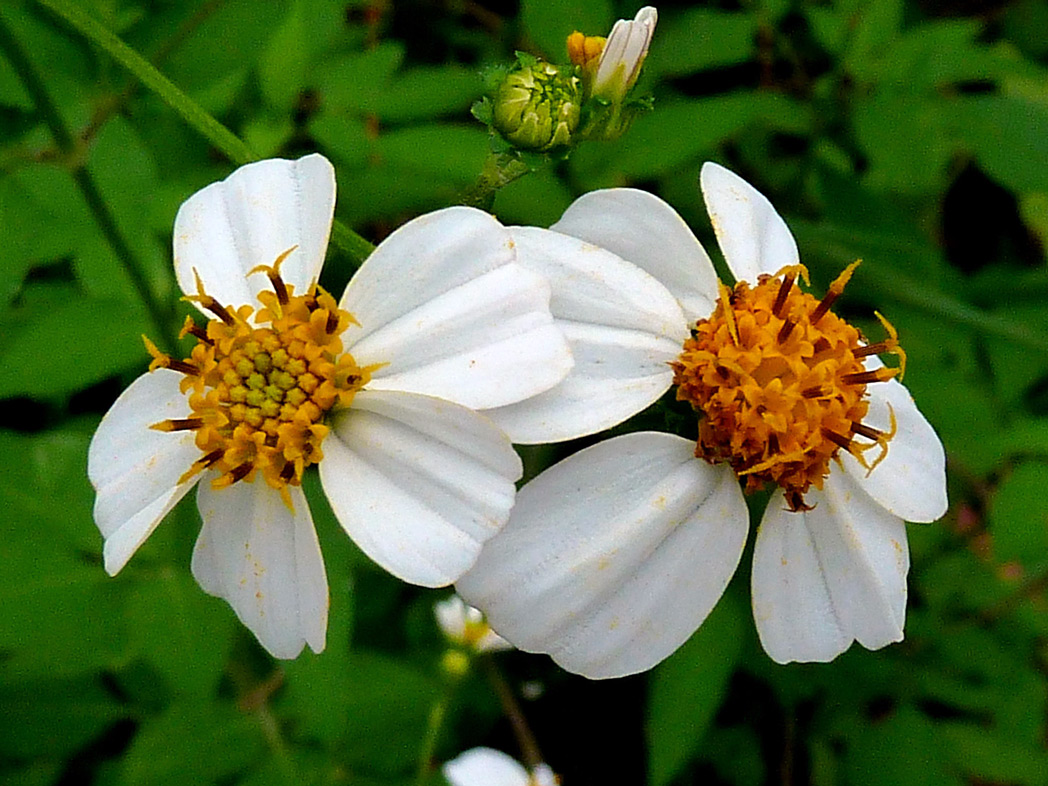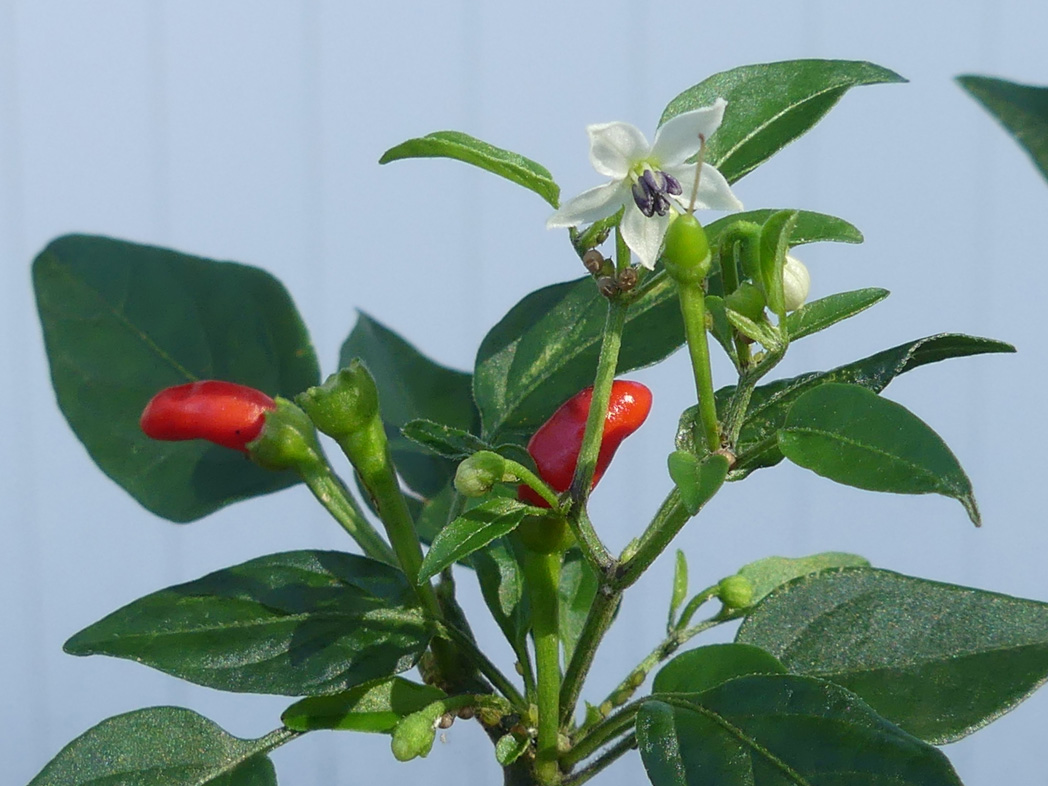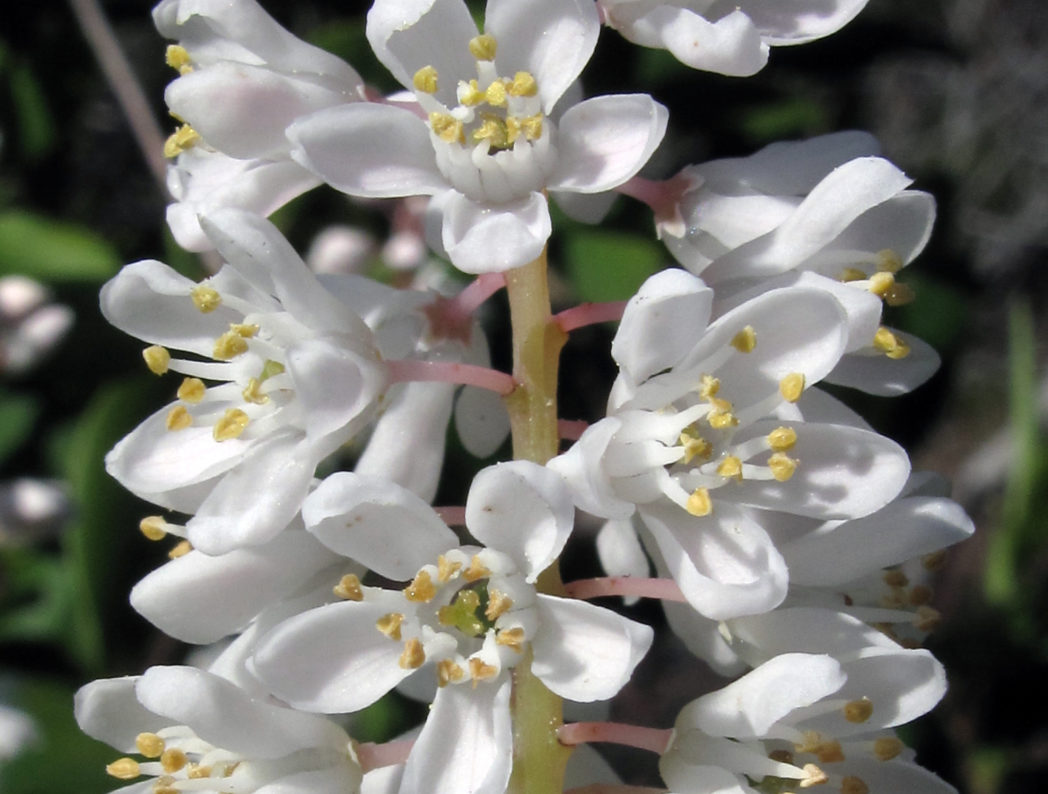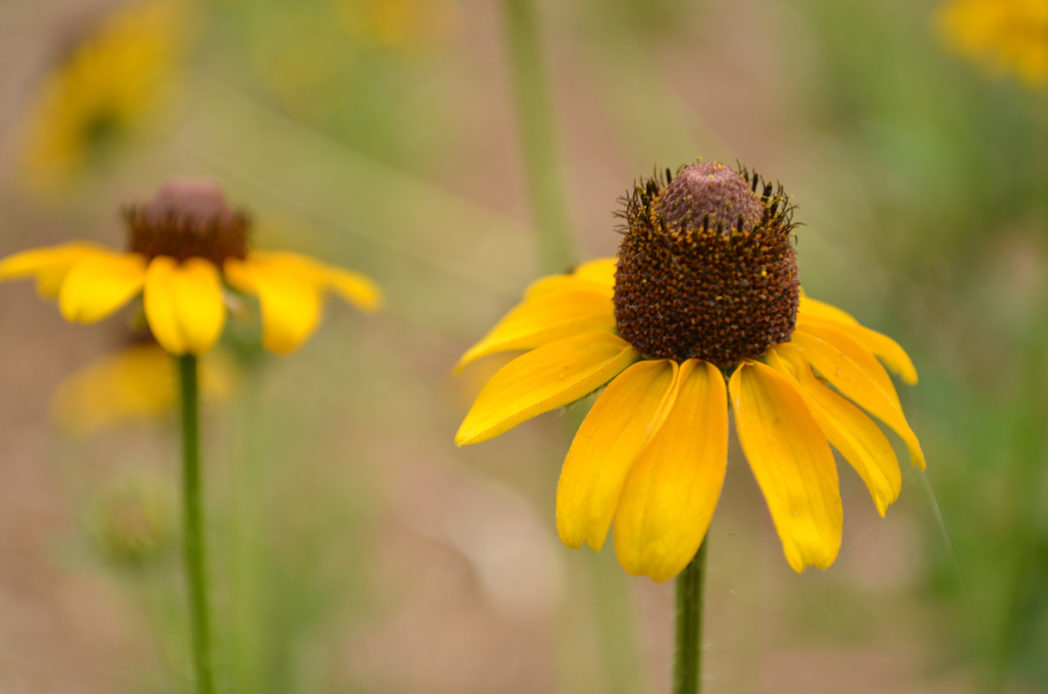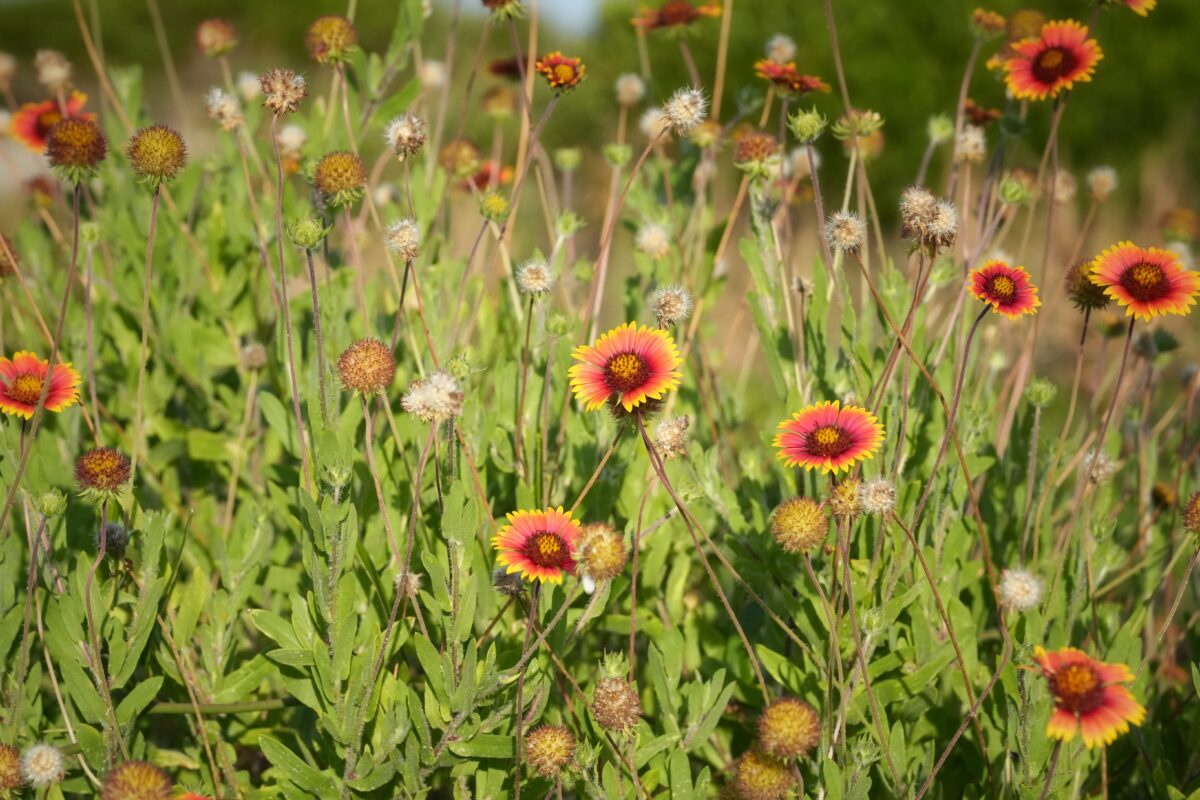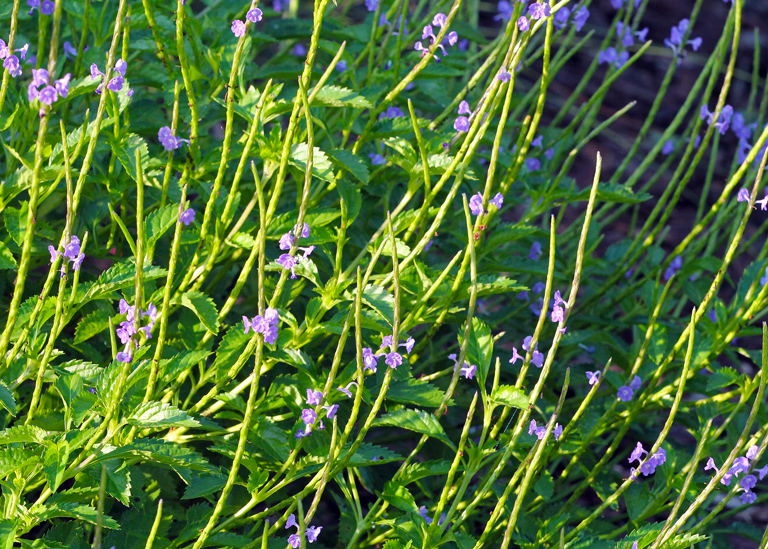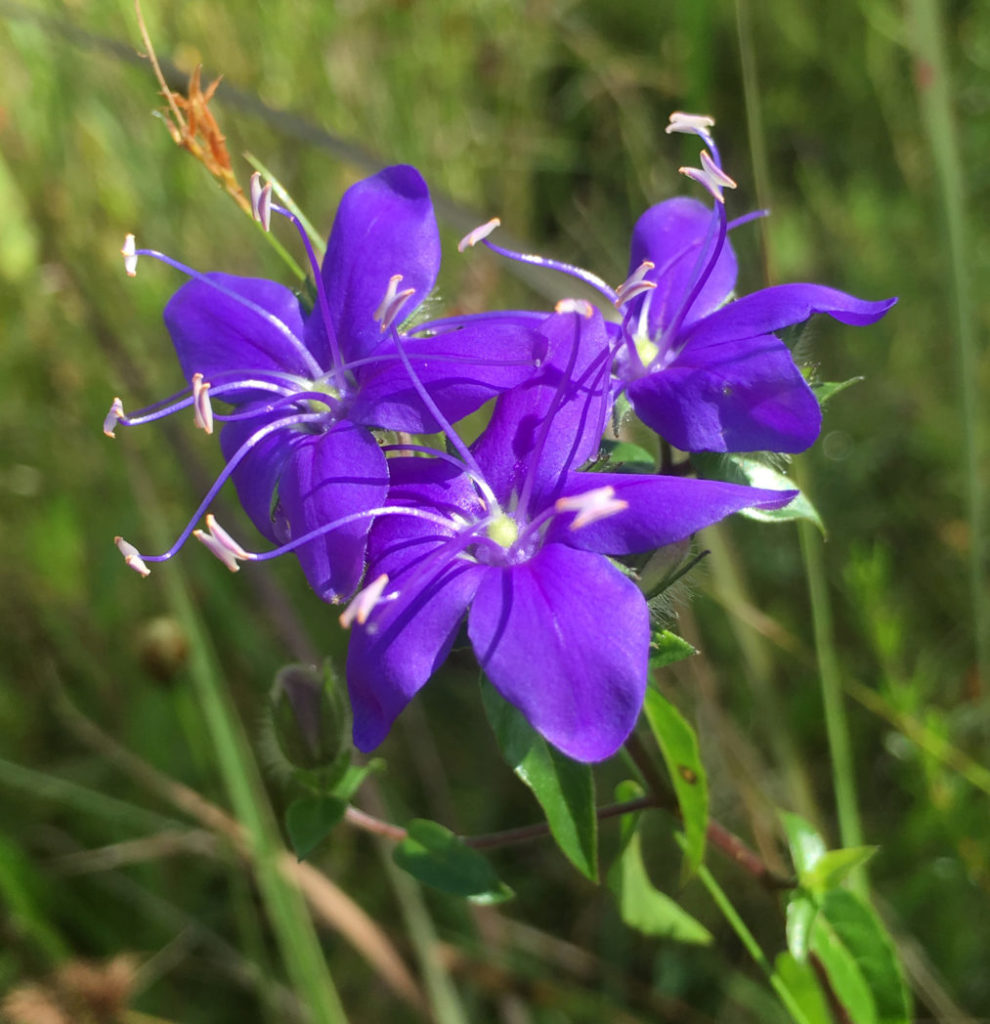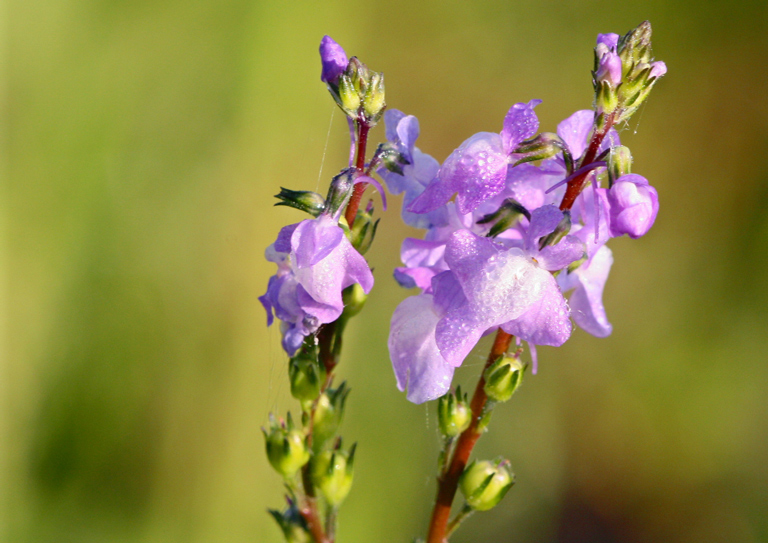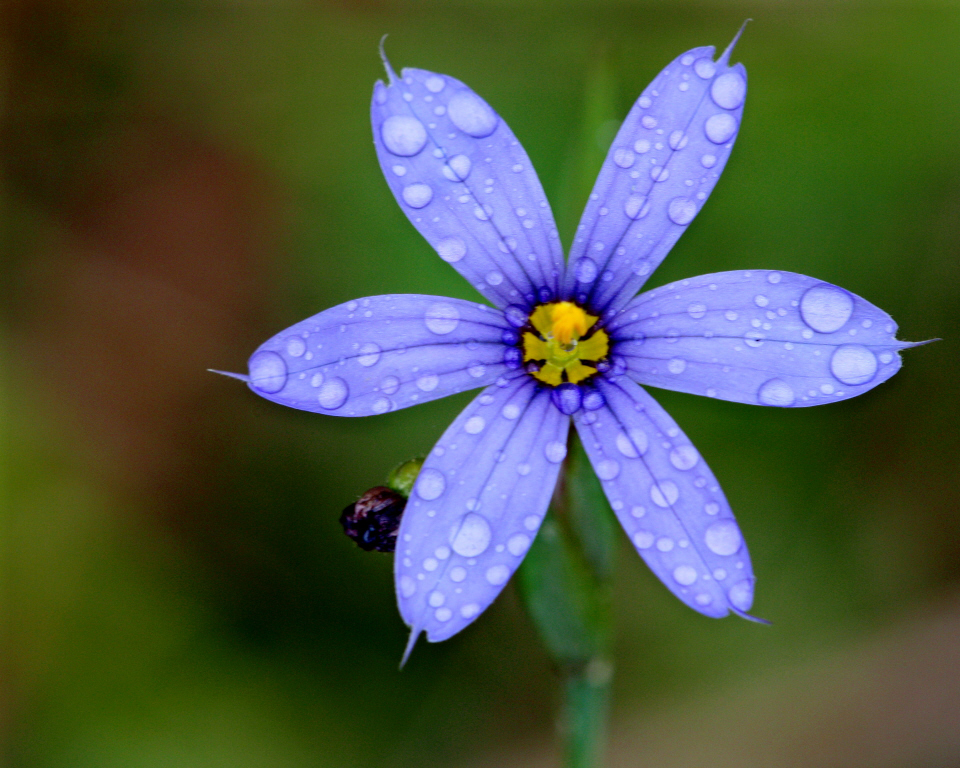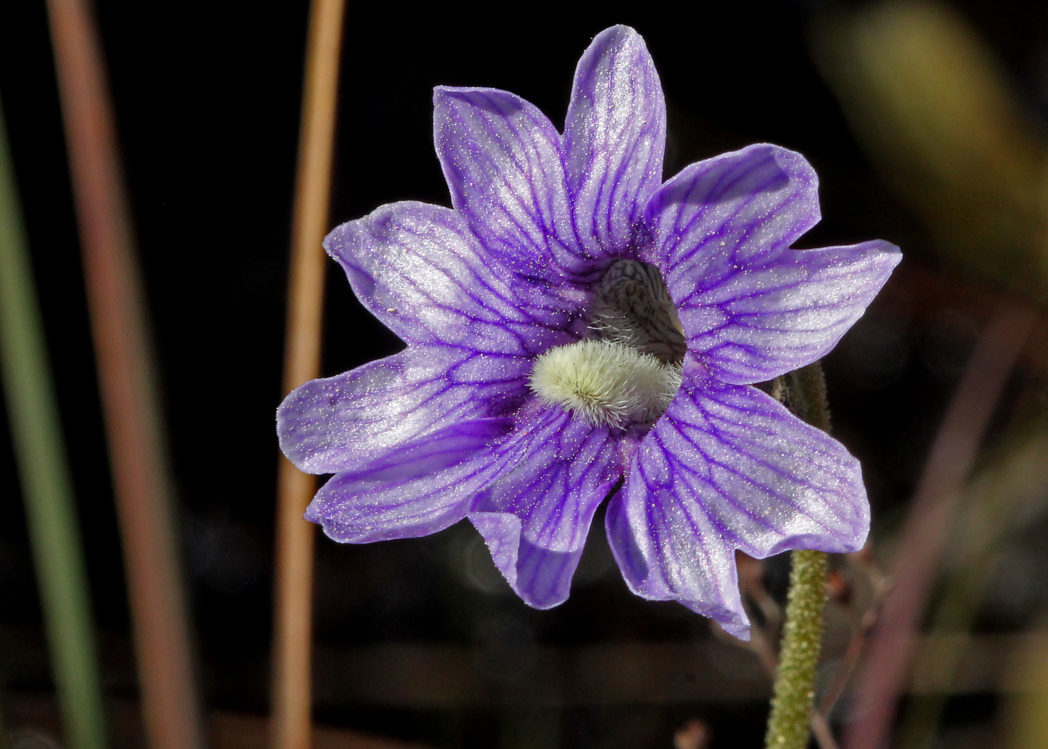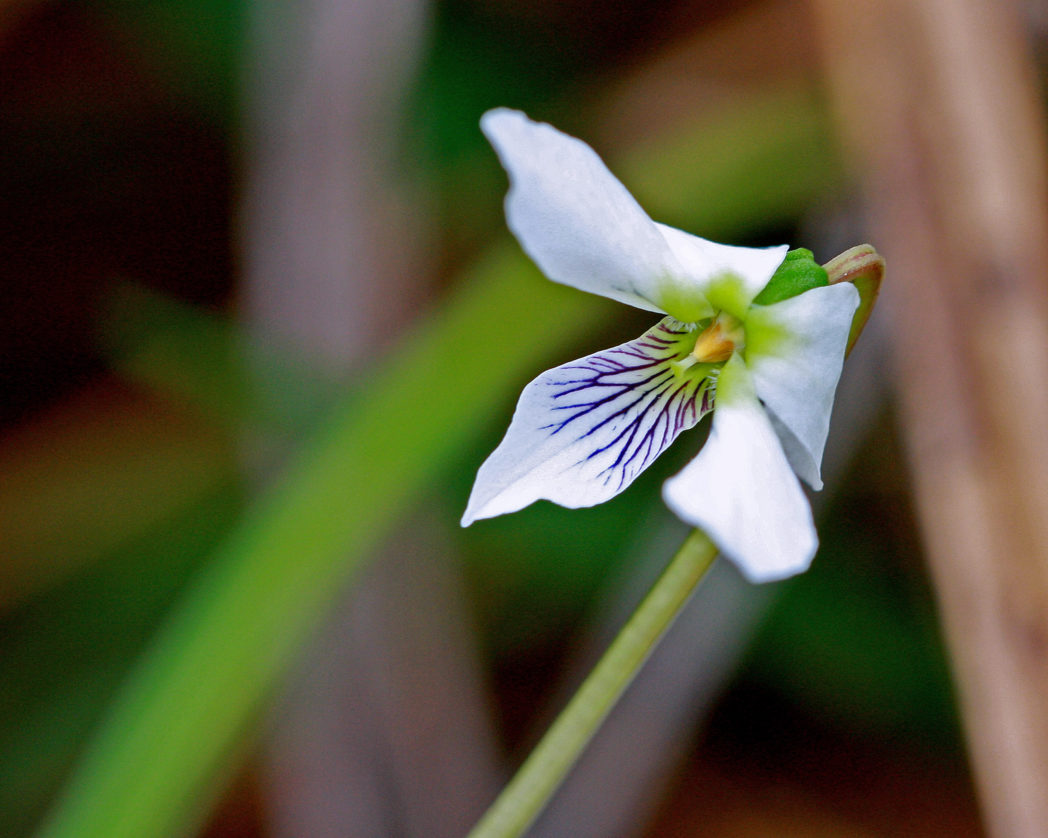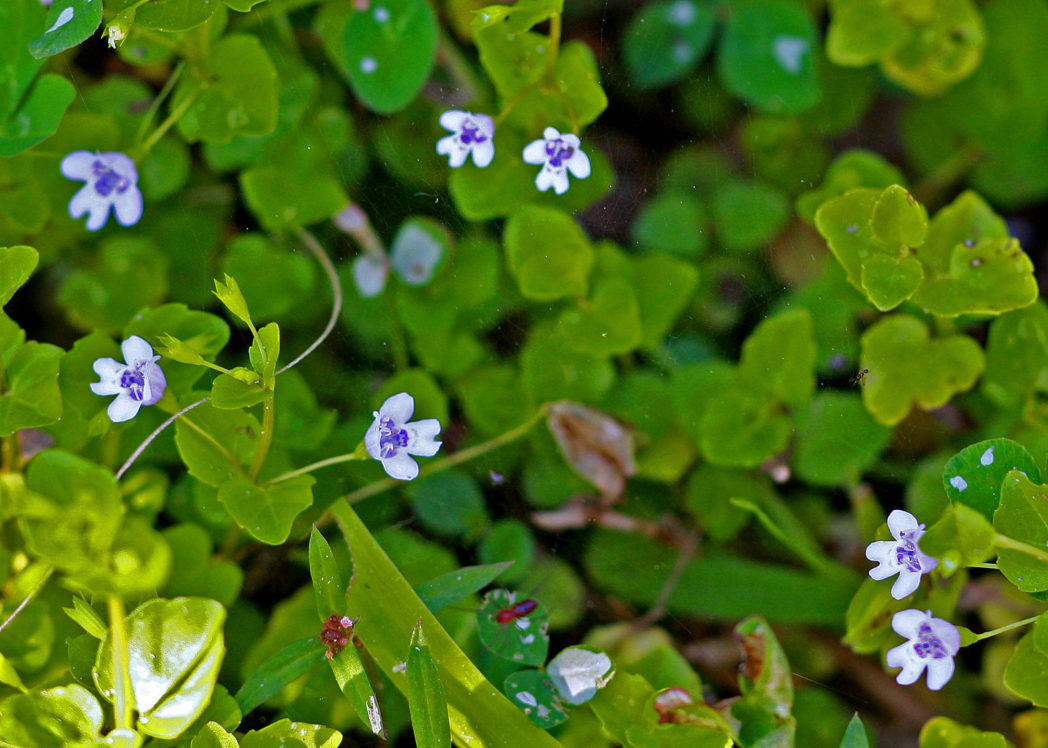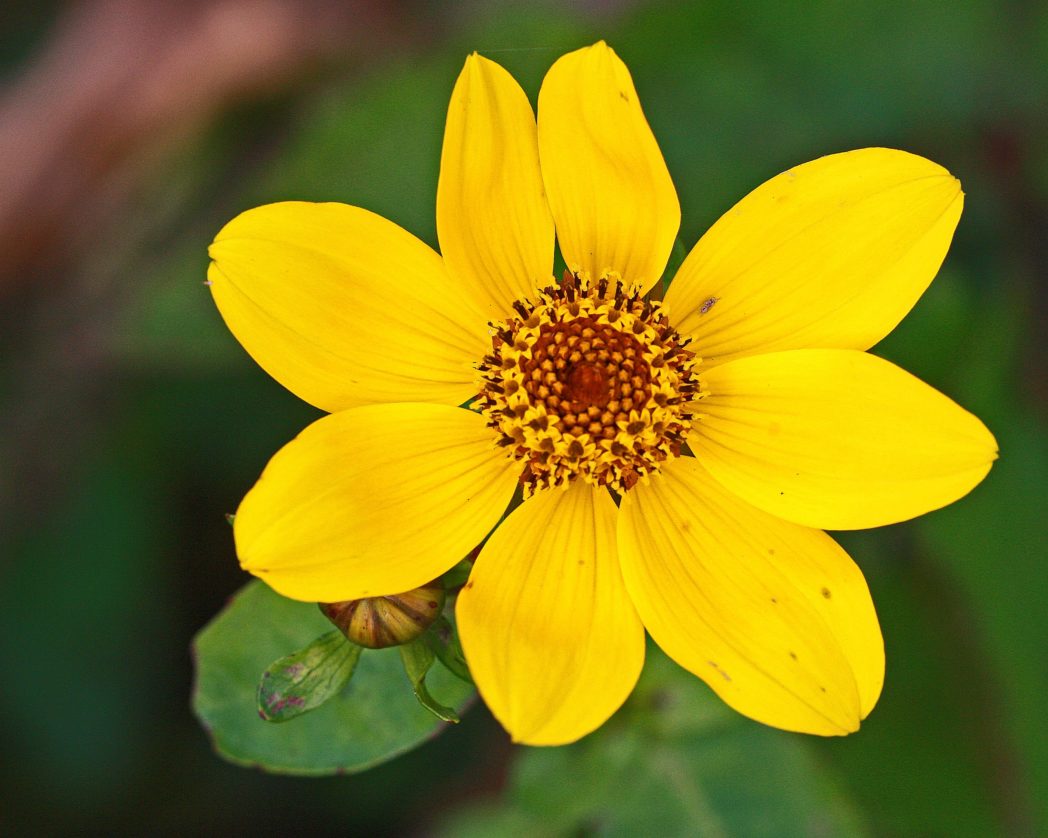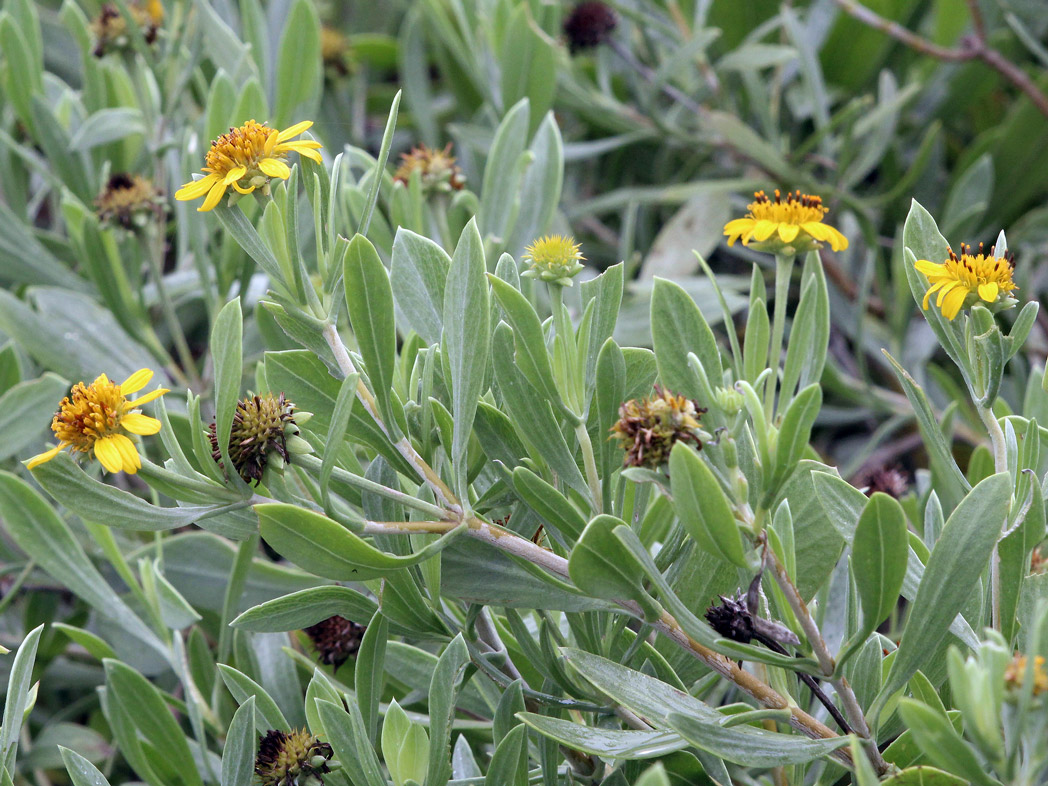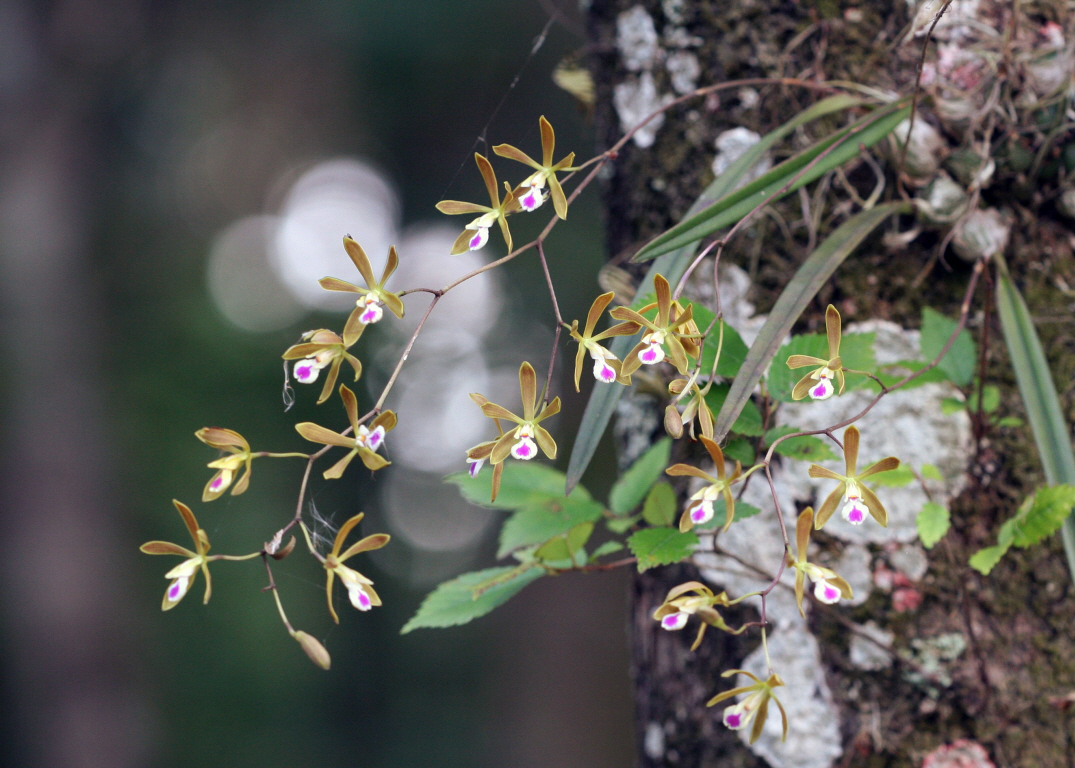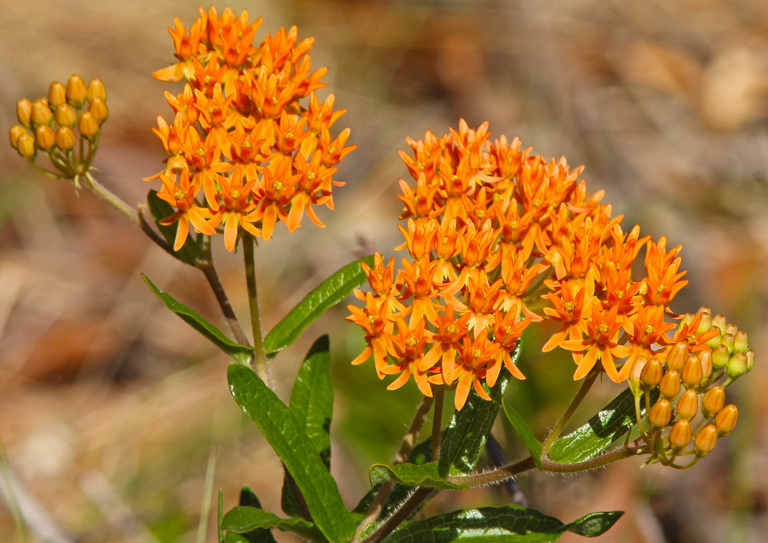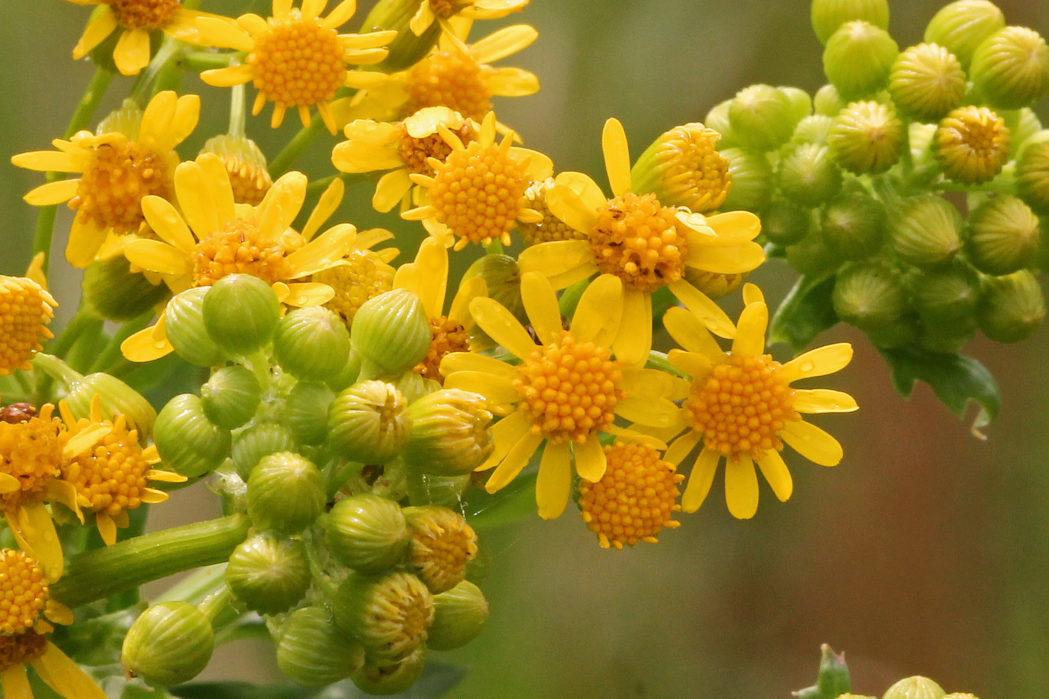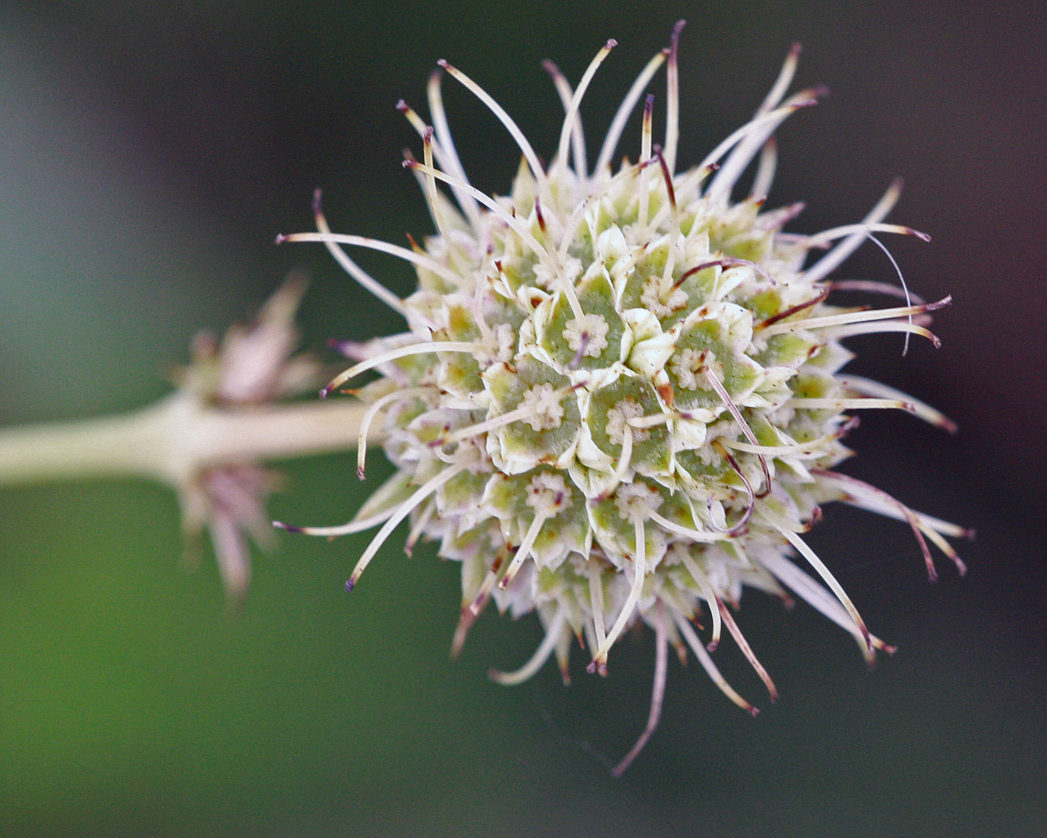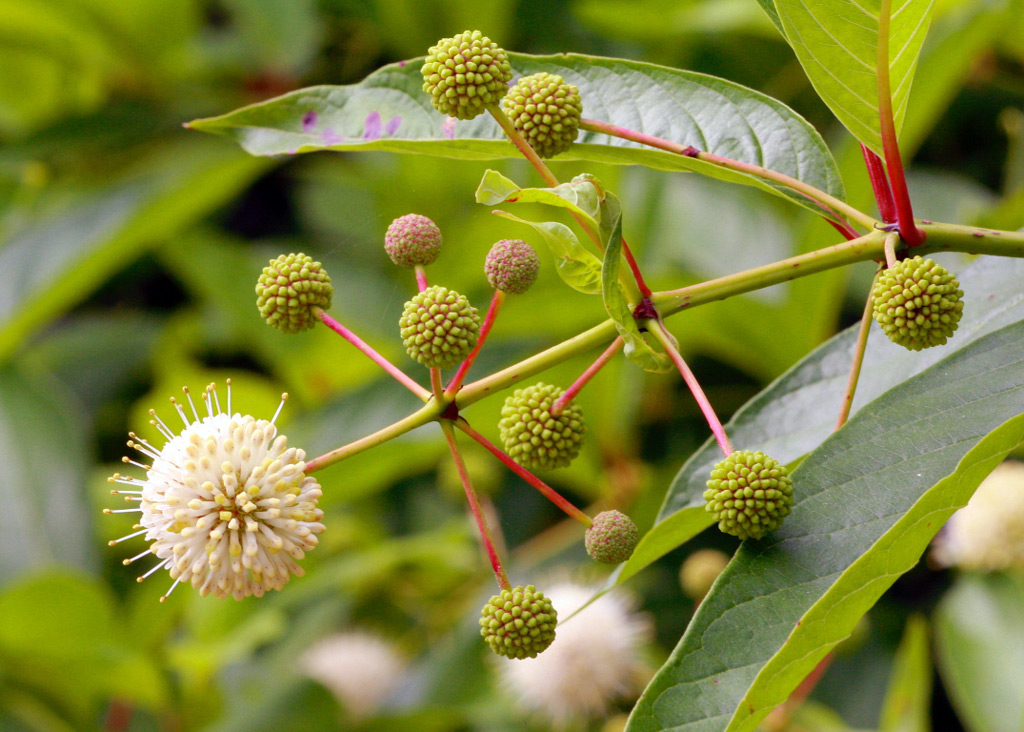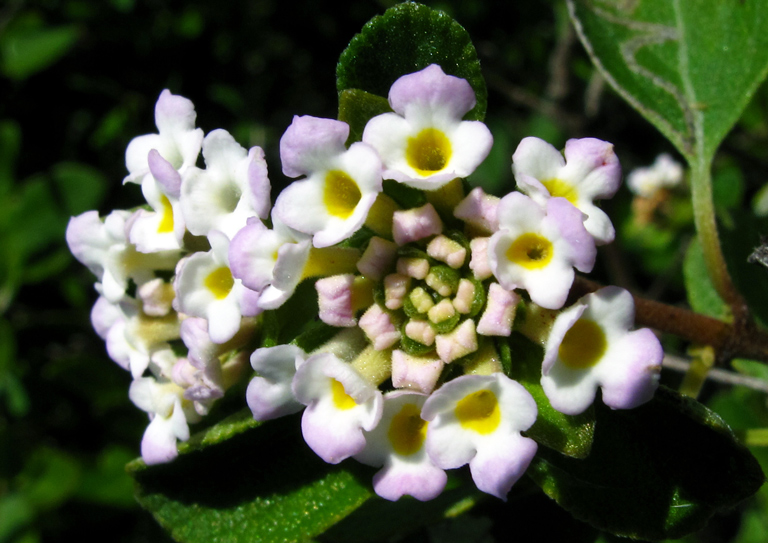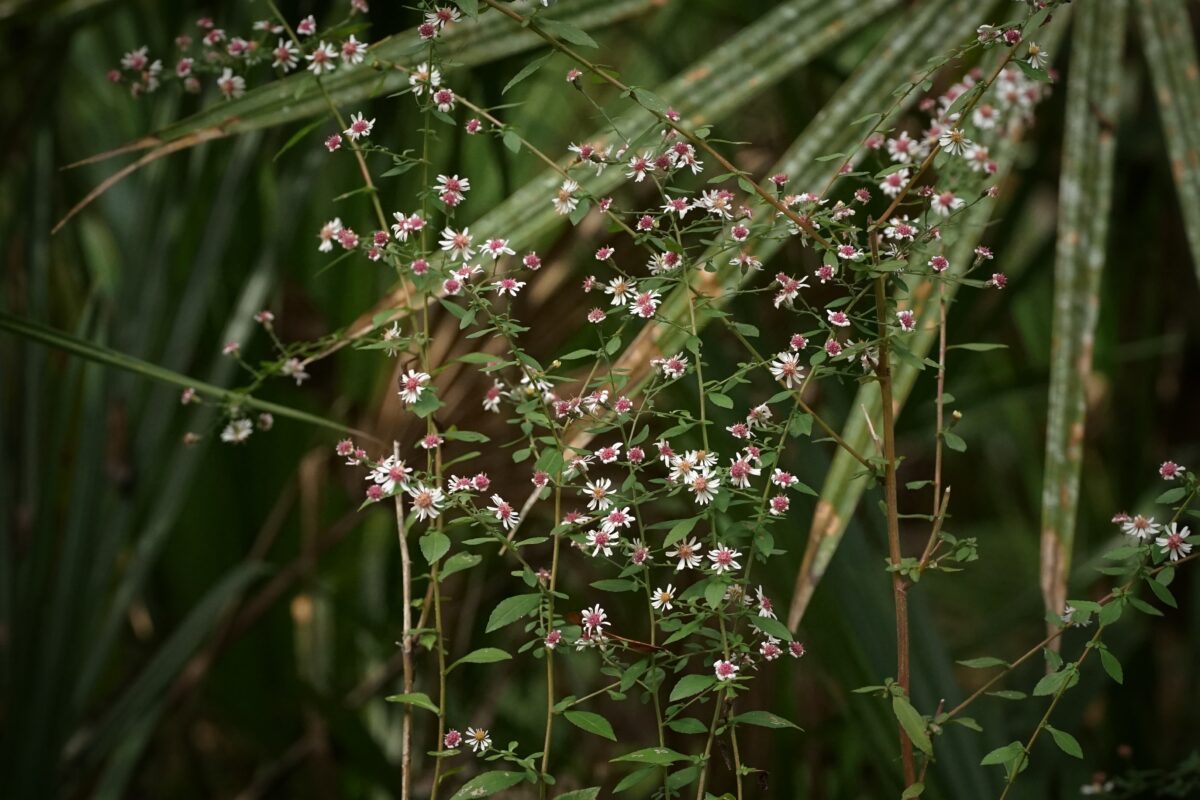Beach morning glory
Beach morning glory (Ipomoea imperati) typically blooms in summer and fall. Its striking whit flowers open in the morning and begin to wilt and close up by afternoon.
Beach peanut
Beach peanut (Okenia hypogaea) is a creeping, vine-like plant that occurs naturally in coastal strands and on beach dunes where it is a pioneer species. It blooms spring through fall, peaking in summer. Although not endemic, it occurs in only four counties in South Florida and is a state-listed endangered species. Despite its common name, it is not related to the common peanut (Arachis hypogaea), which is a member of the Fabaceae (Legume) family.
Bearded grasspink
Bearded grasspinks (Calopogon barbatus) are the earliest bloomers of Florida’s four Calopogon species, generally starting in January and February. They occur in bogs, wet flatwoods, prairies and roadsides.
Beggarticks
Beggarticks (Bidens alba) is perhaps one of Florida’s most controversial wildflowers both for its weedy aggression in home gardens and its questionable native status. However, it also has positive attributes.
Bird pepper
Bird pepper (Capsicum annuum var. glabriusculum) is a lovely native plant found primarily in coastal hammocks in South and Central Florida. The plant’s dainty flowers bloom year-round and attract mostly bees. As its name suggests, birds (especially mockingbirds) love its fruit, particularly before they ripen. The fruit is edible to humans, but be warned — it is hot!
Black titi
Black titi (Cliftonia monophylla) has fragrant white-to-pinkish flowers that typically bloom in spring. The plant is a wonderful pollinator attractor and is also browsed by deer.
Black-eyed Susan
Black-eyed Susan (Rudbeckia hirta) typically blooms in spring through fall. It is pollinated by a variety of insects, and its seeds are eaten by seed-eating birds.
Blanketflower
Blanketflower (Gaillardia pulchella) is an herbaceous wildflower whose brightly colored flowers attract a variety of pollinators. It typically blooms from spring into fall, but may bloom year-round.
Blue porterweed
Blue porterweed (Stachytarpheta jamaicensis) is an excellent addition to a butterfly garden: It is a host plant for the Tropical buckeye and a nectar source for many other butterfly species.
Blue skyflower
The beauty of the brilliant Blue skyflower (Hydrolea corymbose) cannot be clouded! This herbaceous perennial wildflower goes largely unnoticed — that is, until its bright blue blooms appear.
Blue toadflax
Blue toadflax (Linaria canadensis) is an annual wildflower that forms a delicate sea of lavender when in bloom. It is common along roadsides, and in pastures and other disturbed areas.
Blue-eyed grass
The low profile of Blue-eyed grass (Sisyrinchium angustifolium) makes it an excellent groundcover choice. It is fairly adaptable to a variety of conditions.
Blueflower butterwort
Blueflower butterwort (Pinguicula caerulea) is an insectivorous wildflower that typically blooms between January and May. It occurs naturally in bogs and low pinelands throughout much of the Florida peninsula.
Bog white violet
Bog white violet (Viola lanceolata) is a diminutive perennial wildflower that occurs naturally in bogs and along the edges of ponds, marshes and other wetlands.
Browne’s savory
Browne’s savory (Clinopodium browneii) is a highly aromatic plant that can be used to make a tea or to add mint flavor to a salad or other dish.
Burr marigold
Burr marigold (Bidens laevis ) is an annual wildflower with bright yellow flowers that bloom in late fall through early winter. They attract many bees and butterflies.
Bushy seaside oxeye
Bushy seaside oxeye (Borrichia frutescens) blooms year-round, keeping our coastline in color and attracting butterflies and other pollinators. Its seeds provide food for birds and other small wildlife.
Butterfly orchid
Butterfly orchid (Encyclia tampensis) is a slow-growing epiphyte with diminutive yet showy flowers that appear in late spring and summer. Their honey-like fragrance attracts a variety of bees.
Butterflyweed
Butterfly milkweed (Asclepias tuberosa) is a perennial that produces large, showy clusters of bright orange to reddish flowers from spring through fall. It occurs naturally in sandhills, pine flatwoods, and other sandy uplands.
Butterweed
Butterweed (Packera glabella) is one of the first wildflowers to bloom in early spring. It grows in dense stands that illuminate moist roadsides and river edges.
Button rattlesnakemaster
Button rattlesnakemaster (Eryngium yuccifolium ) is a peculiar perennial wildflower that occurs in flatwoods, sandhills, savannas and marshes throughout Florida. It blooms in late spring through fall.
Buttonbush
Buttonbush (Cephalanthus occidentalis) is a wetland shrub with pincushion-like blooms that attract bees, butterflies and moths. Ducks and other birds eat the seeds and the foliage is browsed by deer.
Buttonsage
Buttonsage (Lantana involucrata) occurs naturally along coastal strands, dunes, hammocks, and pinelands in coastal counties from Pinellas and Brevard south to Monroe and into the Keys.
Calico aster
Calico aster (Symphyotrichum lateriflorum) is a lovely fall-blooming aster that occurs in a wide variety of habitats — from forests to marshes and wet prairies — and ranges across Eastern and into Central North America.

